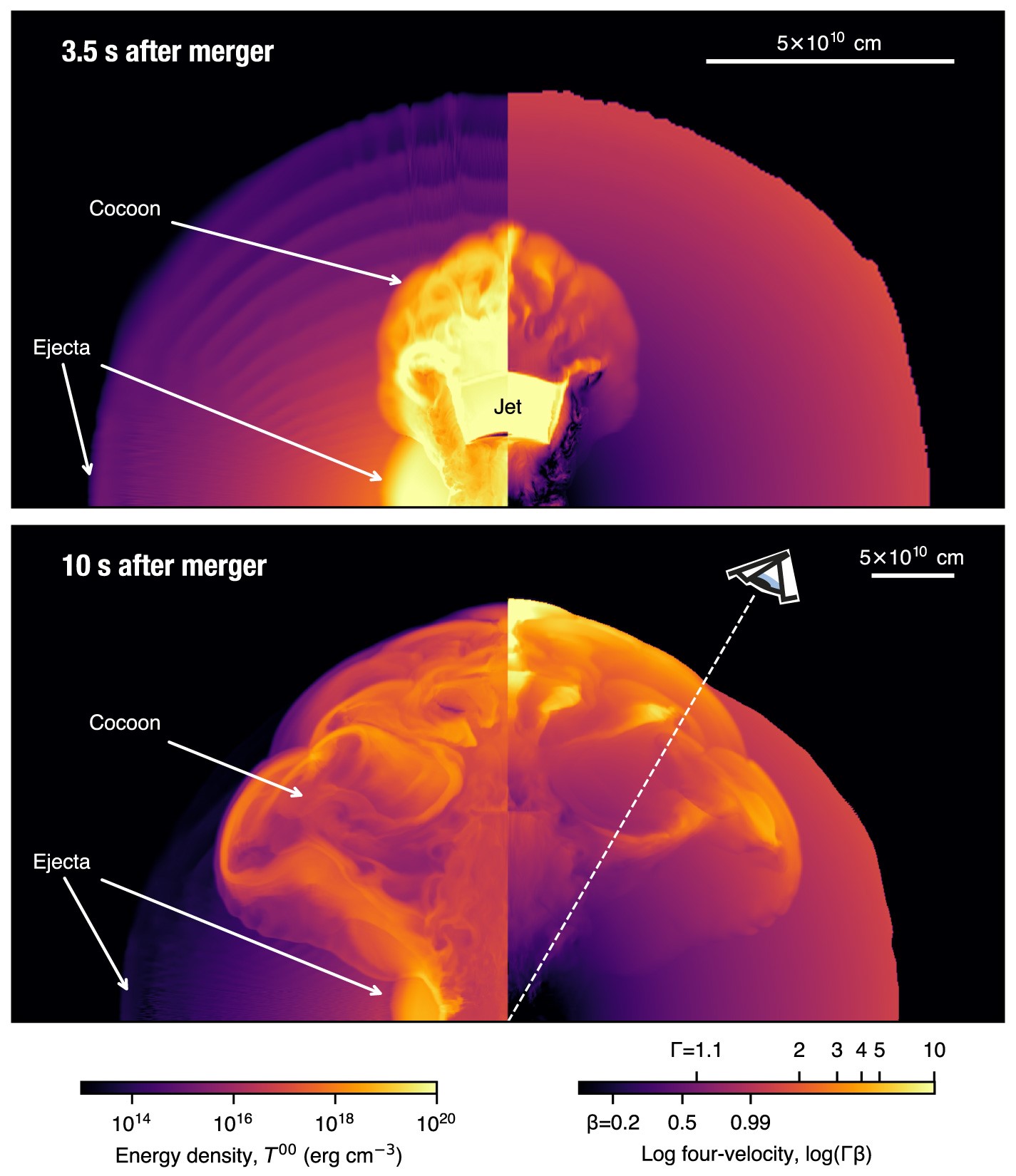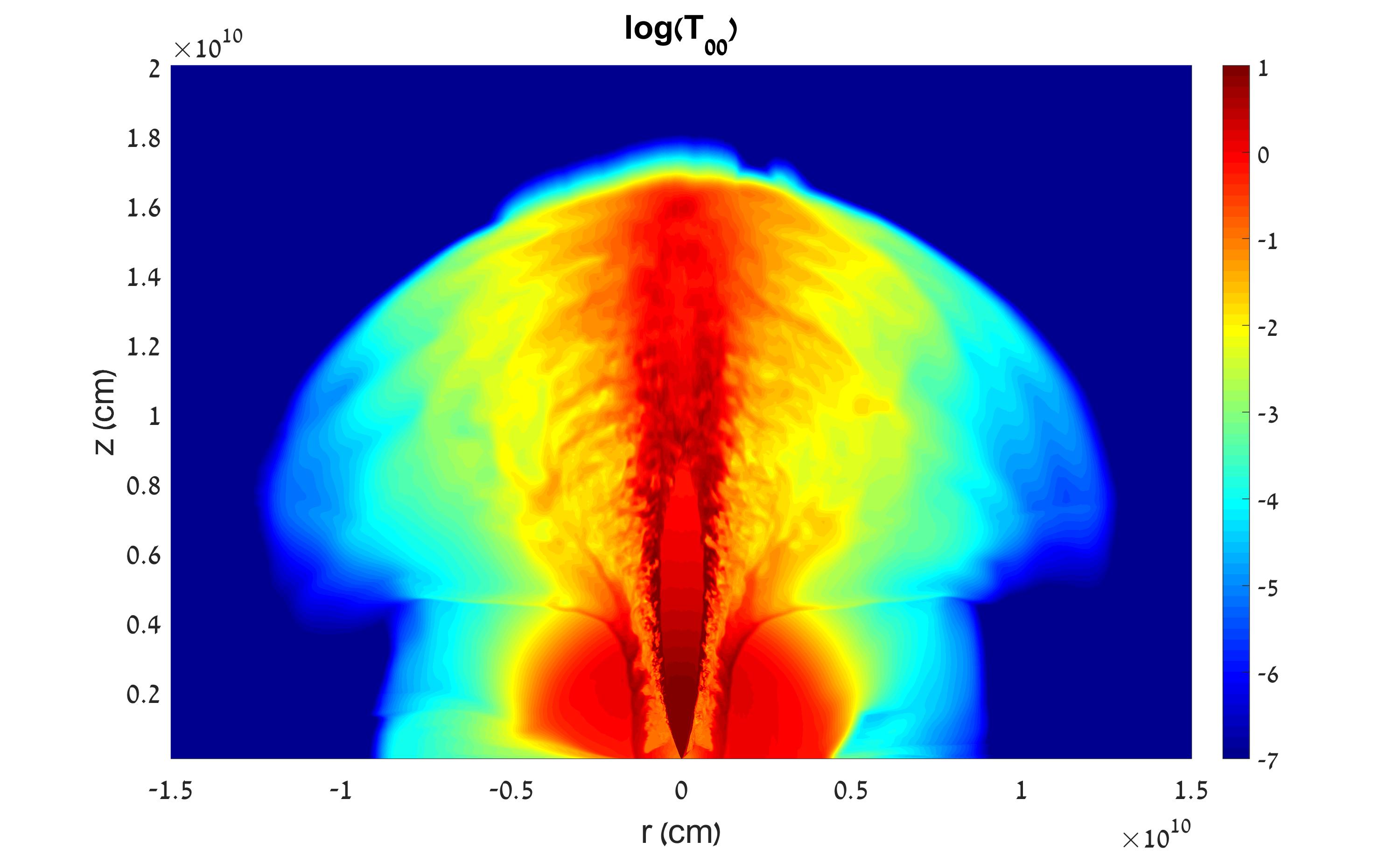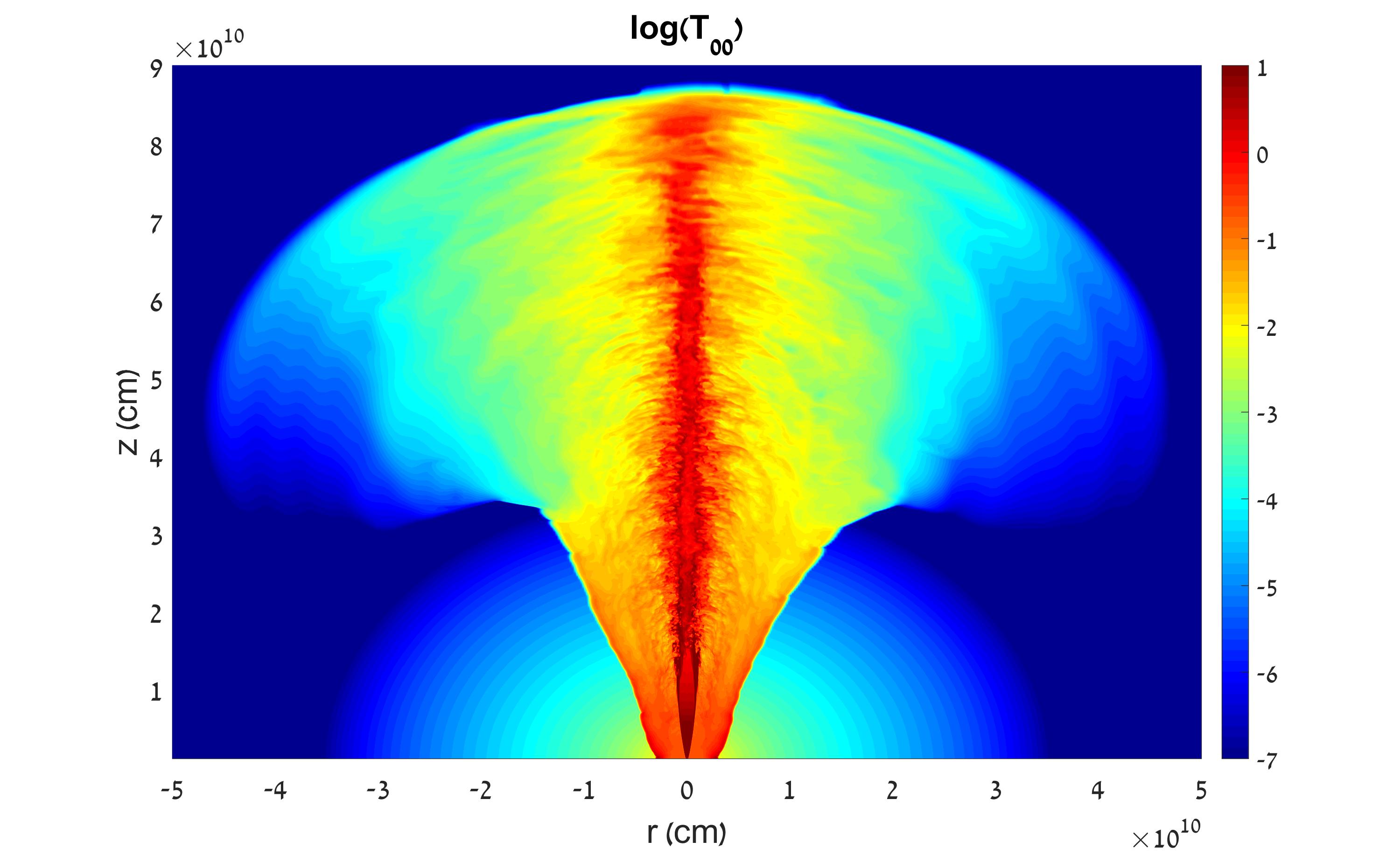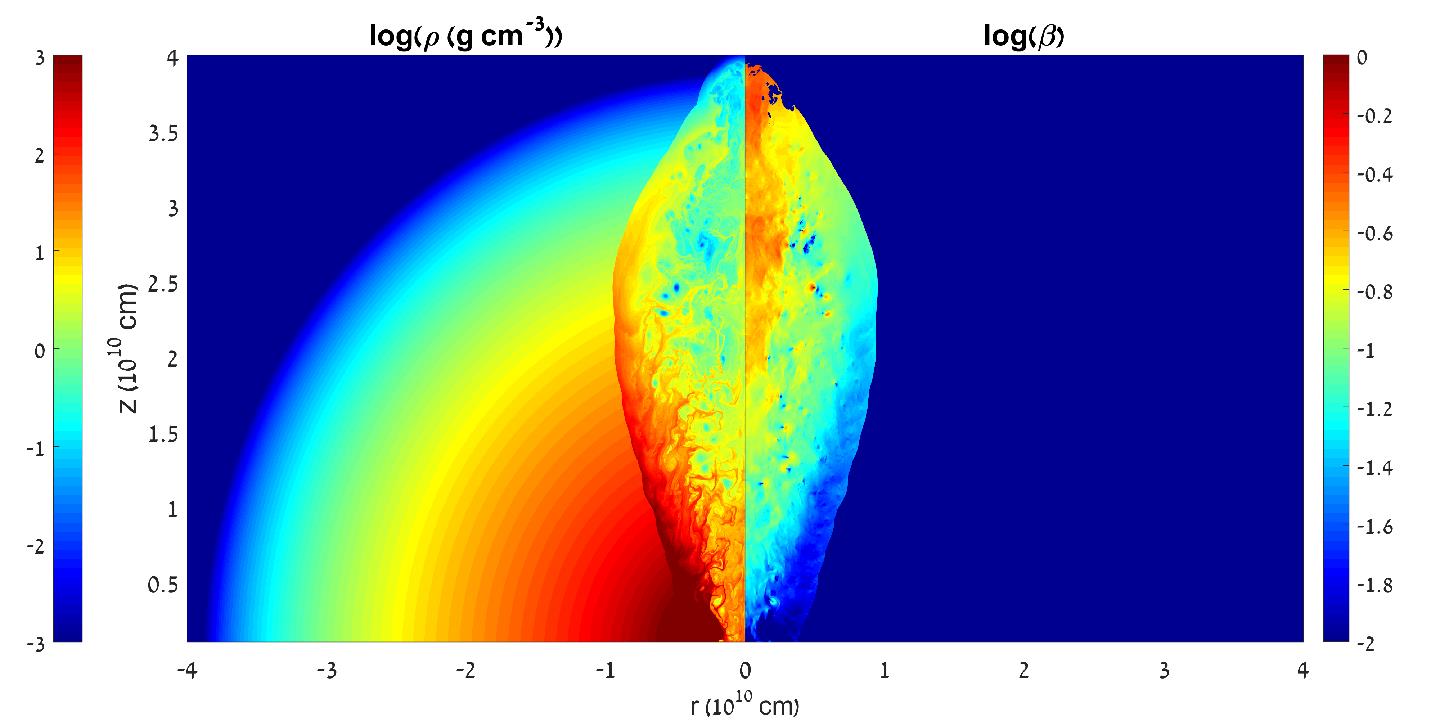Projectswith Ehud Nakar
-

A cocoon shock breakout as the origin of the gamma-ray emission in GW170817
The picture to the left shows a choked jet, which was injected into a hot expanding ejecta, but did not manage to break out of it. The jet energy is then deposited into the cocoon which continues to propagate inside the ejecta until breaking out of it. Upon breakout, energy is released in gamma-rays in two phases: planar and spherical. We show that this emission agrees very well with the observation of GRB170817A. Additionally this scenario fits to a very high degree with the UV/opt/IR and radio observations of this event. Link to the paper
-
A semi-analytical calculation of the jet propagation(modeled by Ehud Nakar)
For the visual interface and a csv file for a given set of jet and medium parameters, click here (implemented by Richard Harrison). For the python code, click here.
-

Cocoon emission from SGRBs
The picture to the left shows the logarithmic energy density of a 3d simulation, in which an hypermassive neutron star is collapsing, and as a result a jet is launched into the outflowing ejecta that comes from the Nuetron Star-Neutron Star merger. The jet spends about a tenth of a second before it breaks out alongside the cocoon. We calculate numerically the cocoon cooling emission and macronova. Link to the paper
-

Cocoon emission from LGRBs
The picture to the left shows the logarithmic energy density of a 3d simulation, in which a jet is launched from the core of a four solar mass Wolf-Rayet star. The jet spends about two seconds in the star before it breaks out. Once it breaks out from the star, so does the cocoon, for which we calculate numerically the upcoming emission.
-

Cocoon emission from FGRBs
The picture to the left shows the four velocity of a 2d simulation, in which a jet is injected for one second before terminated and chocked. This system will therefore continues to evolve spherically. We calculate the upcoming emission, as all the jet energy is deposited in the cocoon, which will radiate it isotropically.
-

Instabilities in the jet
The picture to the left shows the inertia and the four velocity of a 3d hydro jet. Instabilities emerge at the jet's spine soon after the first collimation shock, causing its disintegration. Two types of instablities are present: Rayleight Taylor instabilities in the plane perpendicular to the jet's axis, and Kelvin Helmholtz in the entire space, both operate at the shear between the jet's spine and the shocked jet around it.
